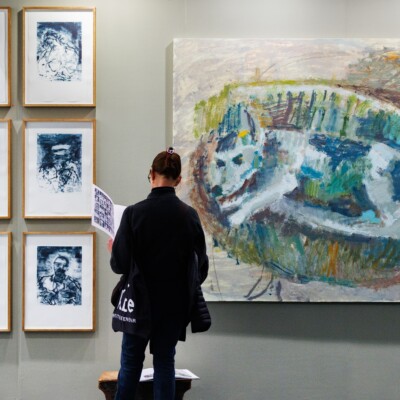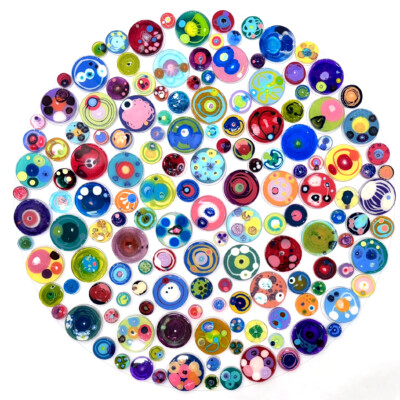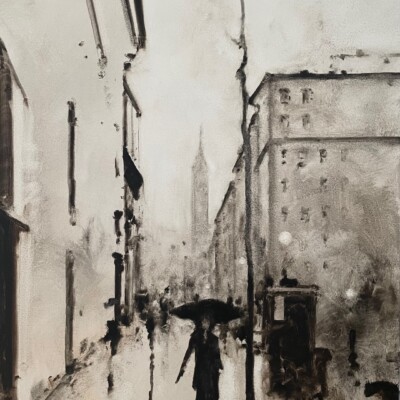Abigail Ogilvy Gallery is proud to present One Eye Closed, a solo exhibition of new artwork by Coral Woodbury through August 4th, 2024. Known internationally for her series of ink portraits of women artists portrayed on pages torn from exclusionary art histories, Woodbury’s recent oil paintings remix 500 years of Western art history, opening the book wider on stories of women in art. The show’s title suggests that our half-blind view of history lacks depth, color, and texture. The exhibition ranges from paintings inspired by 17th century Dutch florals, a theme deemed “feminine” and thus devalued, to a scene of a 19th century women’s sculpture class featuring a cow rather than a nude model, which women were forbidden from viewing.
These paintings emerged from research undertaken during the creation of Revised Edition, her renowned series of sumi ink portraits. In its fourth year, the inks currently number nearly 200. When every page of the History of Art is overpainted with the face of a woman artist, the series will total over 600, making visible a long history of artists who have been overlooked and undervalued.
Throughout this new series, Woodbury brings together important female figures in art history who otherwise may have never crossed paths. In one artwork, Woodbury theorizes — through close scrutiny of Manet paintings — that the locket worn by two of his favorite models is one and the same, and therefore belonged to Manet. In The Locket, the model Victorine Meurent joins Suzon, who appears in one of Manet’s most celebrated paintings, Bar at the Folies-Bergères. Though familiar from beloved Impressionist paintings, these women remained ignored as individuals until recently. In an imagined tête-à-tête, Meurent and Suzon compare notes on their employer and discover the shared connection of the studio prop.
Meurent is a favorite historical figure of Woodbury’s, who also features her in a disorienting painting titled Askew based on Manet’s The Railway, making literal the distortions of our vantage point. Meurent was a painter in her own right, whose recently acquired self-portrait hangs at the Museum of Fine Arts, Boston beside Manet’s version.
In another painting titled Vanitas, Woodbury addresses current environmental urgency through the reference of Maria van Oosterwijck’s 1669 floral still-life. Flower paintings, unlike grand heroic canvases, were considered appropriate subject matter for women. Such still-lives were known as vanitas — a reminder of the inevitable decay of all human decadence. But in Woodbury’s twist, once you look among the petals of the flamboyantly exploding bouquet, you see it encompasses a figure whose legs are all that remain visible. The painting joyfully decentralizes the human in favor of the flourishing of nature, recasting the Baroque theme for our time.
While working within the confines of the Western art historical canon for this show, Woodbury’s paintings playfully subvert embedded biases, uniting artist women in conversation with the art history which omitted them, eliminating their artificial distance from us and each other.
There will be an artist’s reception on Friday, July 12, 2024 from 6:00 – 8:00 PM.




